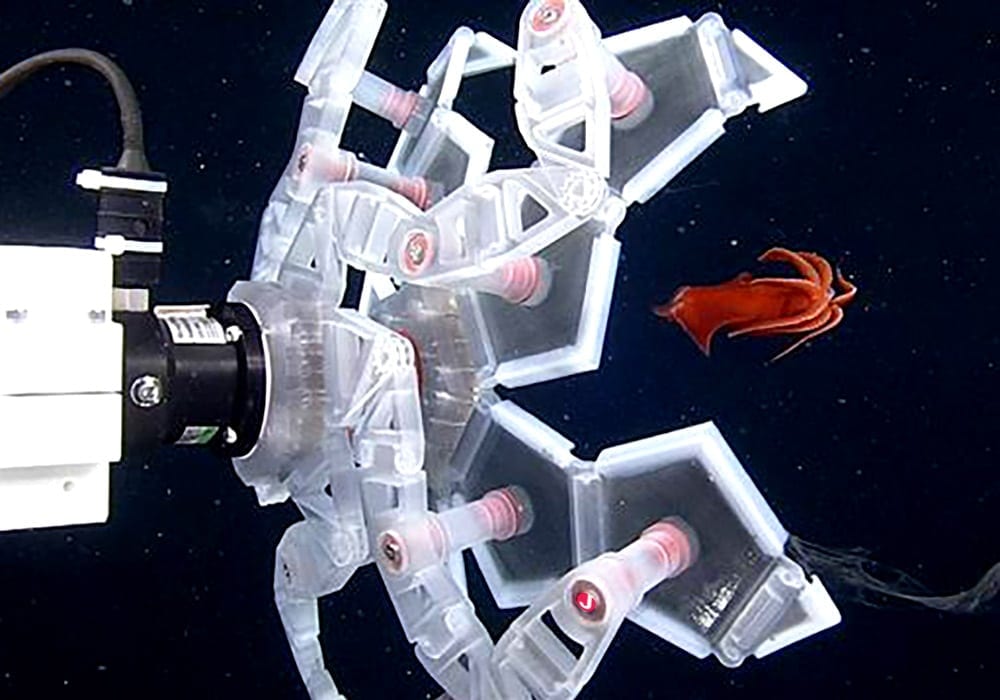Ocean exploration just received a big upgrade, a technology upgrade that is. As of 2018, over eighty percent of Earth’s oceans remain unexplored, undiscovered, and unmapped. What in the SHELL is keeping us from deep-sea ocean research? Whale, there’s not really hope for humans or IT technicians to make it more than 1,000 feet below the surface of the ocean. But, like all good computer nerds, marine life tends to have a difficult time making the trip back up to meet researchers (or in the case of IT guys, to meet human life in general). Plus, it’s kind of boring, because a vast amount of the ocean is “barren, featureless mud”. But, these new robots are about to challenge the harsh temperatures and depths of the ocean in order to learn more about the fragile life below. They will probably also challenge the sanity of a few IT support teams.
Gotta Catch ‘Em All!
Invertebrates, they’ve just got no backbone. What a bunch of push-over’s! A large quantity of sea creatures scientists want to study are incredibly fragile because they are acclimated to the intense pressures of the ocean, which, quite literally, hold them together. This makes it difficult to study them because they can be easily squished and squashed by robots. However, a group of scientists have created a 12-sided origami trap to carefully capture sea organisms as they float by. The device attaches to underwater rovers that have the capability to dive deeper than humans and computer guys. However, it will be up to them on the surface to control these underwater rovers, perform maintenance, and ensure the integrity of the machine hasn’t been compromised by float debris… or angry sea life. Because the research of these creatures has gone “neglected” for years, scientists are finally able to learn more about the impact marine life has on the ocean itself.
The design of this RAD (rotary actuated dodecahedron) origami robot wasn’t easy. Many factors had to be considered, such as material choice, size, closure methods, and speed. The panels which close around sea organisms as they float by is made of a much softer material and does not close completely. There is a small amount of space in between each panel so creatures don’t accidentally amputate themselves or their limbs. This scalable robot has lots of potential to contribute to sea life research of all proportions!
Cold as Ice
Are you willing to sacrifice… your research rover? Seabed is a robot that traverses the unforgiving temperatures of the arctic ocean. This robot has the capability to “fly slowly or hover over the seafloor to depths of 6,000 feet (2,000 meters), making it particularly suited to collect highly detailed sonar and optical images of the seafloor.” Now that’s one shell of an undersea rover.
Because of the climate this robot works in, it cannot be tethered or use radio waves for communication. Instead, Seabed uses sound signals for communication, not wifi, which is sure to keep IT support on its toes. Luckily only one robot has been lost, which was due to a strong current that swept it away. When the rover is placed in water, it easily acclimates to the temperature of the sea, but let’s say an attachment was forgotten or a program needs to restart (have you tried turning it off and then…), causing it to need to be brought back up. The robot will basically turn into a block of ice in the frigid air of Antarctica and need to be thawed before being worked on. Guess you could say the onboard computers are literally frozen! It’ll probably take more than turning it on and off again to get the rover ready to be redeployed.
The Seabed has become an incredibly important robot, despite the numerous risks that come with its operation. Oh whale, what’s a little danger to some important scientific research? Plus, it’s a robot. It’s even more dangerous for humans to conduct deep-sea missions in below freezing temperatures.
For the Porpoise of Research
These cool robots are helping scientists uncover more and more secrets of the ocean every day. And hey, maybe they’ll end up as a great source of steady income for IT technicians! Seabed has even started analyzing glaciers and ice thickness in Antarctica! The possibilities are never ending! But no current amount of research will TIDE human curiosity over until we can finally discover the next 80% of the oceans’ mysteries…



VIEW ALL